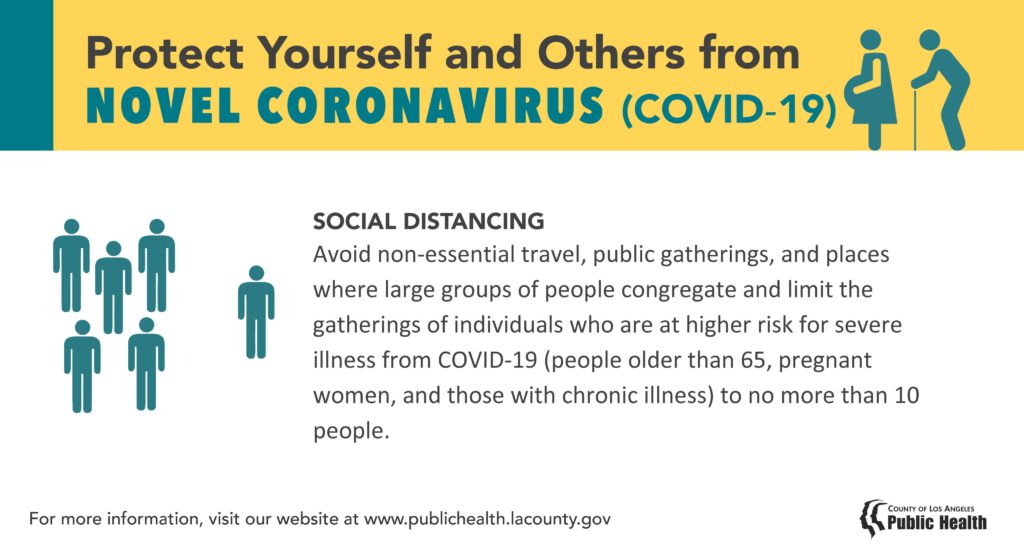
When you’re under self-quarantine, the one thing you definitely have is an abundance of time. I’ve used that time to do some reading. Specifically, I’m educating myself on the concept of social distancing, the mathematics behind it, and the reasons why it’s the most important tool we have to fight the current COVID-19 pandemic. In today’s post, I thought it might be useful to share some of the most insightful pieces I’ve read over the past two days.
Social Distancing is a concept that, up until last month, most Americans hadn’t even considered, if they’d even heard of it at all. So what does it mean? Well, when epidemiologists refer to social distancing, they’re talking about a set of conscious behaviors adopted to limit close contact between individuals and slow down the community spread of illness. Basically, if people aren’t around one another, they can’t transmit the disease. But what does that look like from a practical point of view?
The Atlantic’s Kaitlyn Tiffany spoke with a panel of experts on the Dos and Don’ts of Social Distancing. It turns out it’s not a one size fits all approach, and the reality of social distancing may mean different things to different people. But even among the healthiest of our population, significant behavioral changes will be necessary to slow down community transmission. Tiffany writes:
“There is a general consensus that while young and healthy people who are at lower risk for personally suffering severe illness from the coronavirus don’t have to be locking themselves in their homes for the next month, they do need to dramatically alter their daily lives, starting now.”
To learn about the math behind social distancing, I suggest reading this piece by Aarian Marshall written for Wired. If you’re interested in why it’s so important to suspend sports leagues, schools, and other mass gatherings, this will give you some food for thought. As Marshall explains:
“From a mathematical perspective, determining how big a crowd is safe depends on a couple of key questions: How many people in a given area are infected with the disease? And how big is the event? If you know those things, you can estimate the probability of someone getting infected at the event.”
In an article for Quartz, Michael J. Coren uses St. Louis during the 1918 Spanish Flu outbreak as a textbook example of the effectiveness of social distancing. The article also explains the concept of “flattening the curve” and why this is such an important goal from a public health perspective. Coren writes:
“The extreme measures—now known as social distancing, which is being called for by global health agencies to mitigate the spread of the novel coronavirus—kept per capita flu-related deaths in St. Louis to less than half of those in Philadelphia, according to a 2007 paper in the Proceedings of the National Academy of Sciences.”
Finally, in an opinion piece published in the NY Times this morning, sociologist Dr. Eric Klinenberg discussed the importance of not only social distancing, but social solidarity as it relates to combating the current pandemic. This was a quote I found particularly insightful:
“In addition to social distancing, societies have often drawn on another resource to survive disasters and pandemics: social solidarity, or the interdependence between individuals and across groups. This an essential tool for combating infectious diseases and other collective threats. Solidarity motivates us to promote public health, not just our own personal security. It keeps us from hoarding medicine, toughing out a cold in the workplace or sending a sick child to school. It compels us to let a ship of stranded people dock in our safe harbors, to knock on our older neighbor’s door.”
There are certainly more thoughtful pieces worth sharing, but I think the above four perspectives are a good place to start.
Right now, people are scared and uncertain. As more confirmed cases tally up, fear and uncertainty will rise. Start by getting a level head, educating yourself, and mentally preparing for some of the societal changes that may yet come to pass.
Practicing informed social distancing is the best defense we have right now to mitigate the potential spread of COVID-19. In standing apart, we stand together. And standing together is what’s going to get us through this in the end.
Next: COVID-19 Self-Quarantine Day 3: If Cabin Fever is the Worst of It
Previous: COVID-19 Self-Quarantine Day 1: What’s That Tickle in My Throat?


